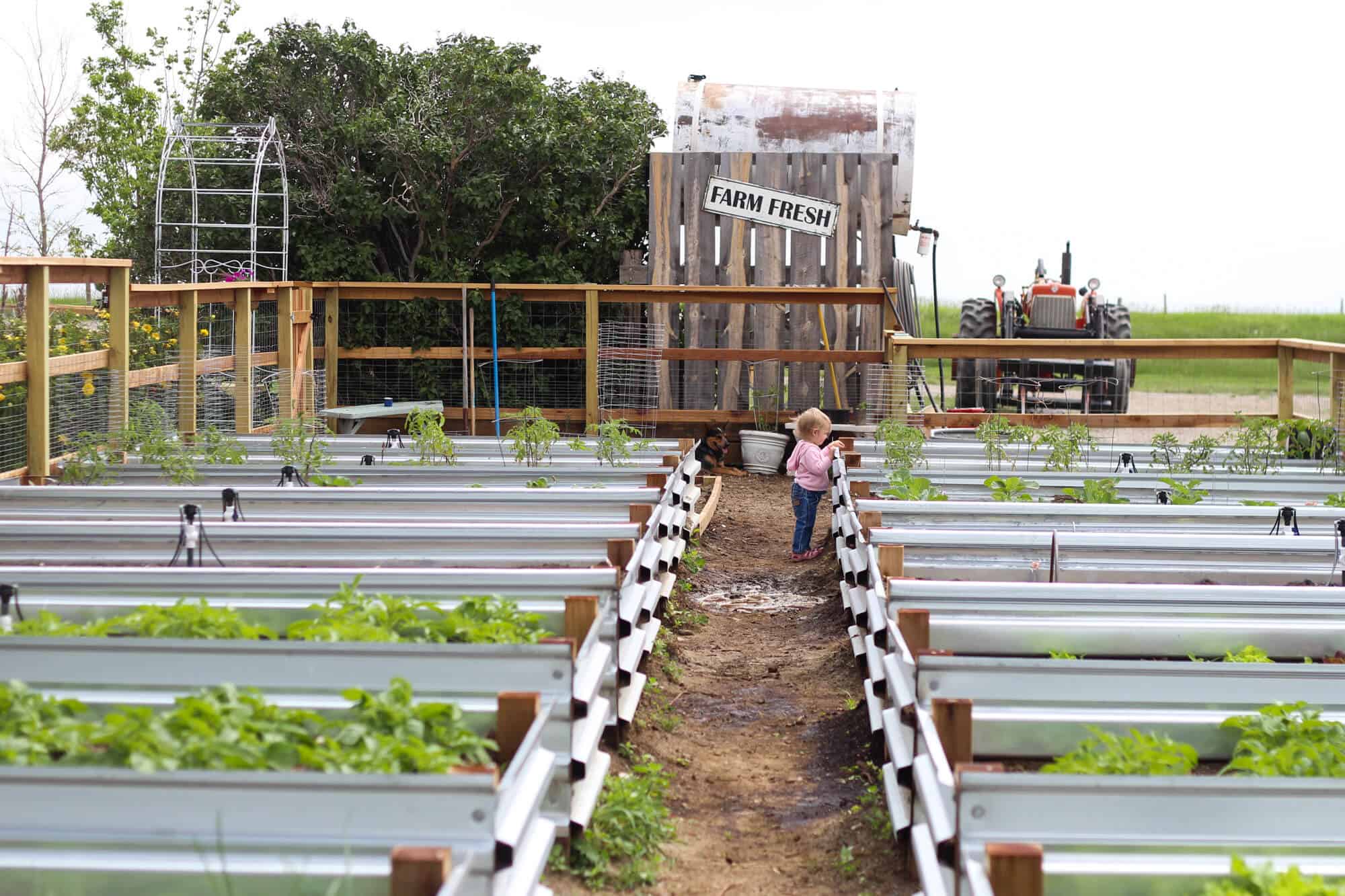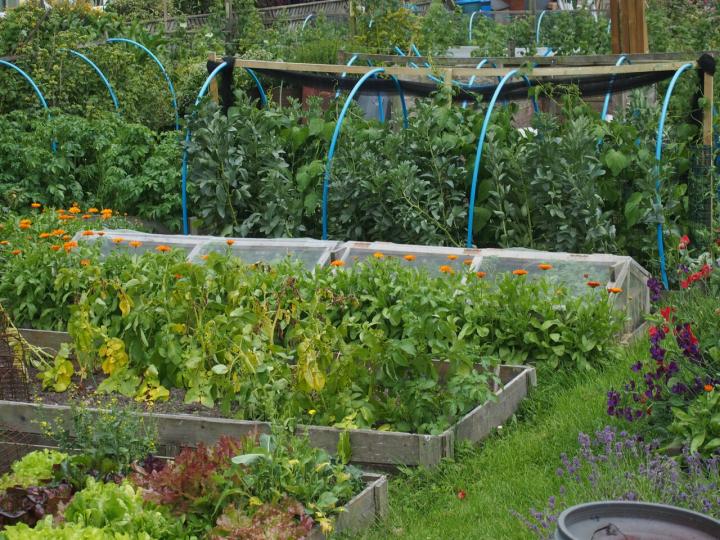Watering and Soil Management Tips for Homestead Gardening
Watering and Soil Management Tips for Homestead Gardening
Blog Article
Discover Necessary Tips for Effective Gardening Techniques and Practices
By prioritizing essential components such as dirt health, effective sprinkling methods, and suitable plant selection, garden enthusiasts can develop a successful community that supports dynamic growth. Many fanatics neglect crucial information that can make or break their gardening success-- checking out these neglected facets may reveal the trick to cultivating a flourishing yard.
Understanding Dirt Health
Dirt health and wellness is a fundamental element of successful horticulture, as it directly affects plant growth, nutrient schedule, and community equilibrium. Healthy dirt is characterized by an abundant biodiversity of microorganisms, natural matter, and a well balanced pH level, which with each other create an atmosphere for plant advancement.
To understand soil wellness, one should consider its physical, chemical, and organic buildings. The texture and structure of soil influence its capacity to maintain dampness and nutrients, while the chemical make-up determines the availability of crucial components like nitrogen, potassium, and phosphorus. Routine dirt screening is critical to evaluate these factors, enabling garden enthusiasts to make informed choices concerning fertilizers and amendments.
Additionally, advertising organic activity within the dirt is essential for keeping its health. Practices such as composting, crop rotation, and making use of cover crops can enhance microbial diversity, boost nutrient biking, and lower soil erosion. By prioritizing soil wellness, gardeners not only enhance plant growth but likewise add to a lasting ecosystem, guaranteeing that their gardening methods are durable and ecologically responsible over time.
Reliable Watering Techniques
Ensuring that plants receive the ideal amount of water is essential for their wellness and development, particularly when combined with a strong structure of soil health and wellness (Homestead Gardening). Efficient sprinkling methods can dramatically impact plant vitality, lowering water wastefulness and promoting ideal development
One essential approach is deep watering, which motivates roots to expand much deeper right into the soil, boosting dry spell resistance. This strategy commonly involves sprinkling much less often yet in bigger amounts, permitting wetness to penetrate the root area extensively. Timing is also vital; morning is the perfect time to water, as it minimizes dissipation and permits vegetation to completely dry throughout the day, decreasing illness risks.
In addition, utilizing compost can help keep dirt moisture and control temperature, additional aiding efficient sprinkling practices. Utilizing a drip irrigation system can also offer targeted wetness straight to the origins, guaranteeing that water gets to where it's most required while conserving sources.
Keeping track of rainfall and soil moisture levels can lead modifications in your watering schedule, guaranteeing plants obtain constant hydration without over-saturation. By adopting these reliable sprinkling strategies, gardeners can promote a thriving atmosphere for their plants to grow.
Plant Selection and Placement
How can the appropriate plant selection and critical positioning change a yard into a this contact form flourishing ecological community? When selecting plants, think about aspects such as environment, dirt type, and sunshine direct exposure. Homestead Gardening.
Strategic positioning entails setting up plants according to their development practices and needs. Taller plants must be placed at the rear of borders to avoid shading much shorter plants. Furthermore, grouping plants with comparable water and light requirements can improve their development and lower competitors for resources.
Including a diversity of plants not just includes visual allure yet also promotes biodiversity, drawing in useful bugs and pollinators. Consider the seasonal adjustments in your garden; pick a mix of annuals, evergreens, and perennials to guarantee year-round interest.
Last but not least, remember to examine the mature size of plants prior to growing to stay clear of congestion and guarantee ample air circulation. Thoughtful plant selection and calculated placement develop an unified setting, allowing your garden to prosper while reducing difficulties.
Bug and Illness Monitoring
Reliable insect and condition management is vital for maintaining a healthy garden ecological community - Homestead Gardening. An aggressive strategy, combining cultural, organic, and chemical approaches, can significantly minimize the effect of parasites and illness website link on your plants

Biological controls, such as introducing useful bugs like ladybugs or predatory termites, can maintain bug populations in check without harming the setting. In addition, preserving plant health and wellness through correct watering, fertilizing, and trimming will strengthen their strength against conditions.
When intervention is necessary, select targeted chemical therapies, making certain to adhere to application guidelines to decrease harm to non-target organisms. Constantly prioritize lasting practices, as they advertise long-lasting garden wellness and ecological balance. By incorporating these techniques, garden enthusiasts can effectively take care of parasites and diseases, making sure growing plants and a productive garden.

Seasonal Upkeep Practices
In spring, emphasis on dirt prep work by testing pH levels and adding needed amendments. Routinely evaluate arising plants for parasites and diseases.
As summer strategies, make sure sufficient watering while keeping track of for indications of tension or illness. Prune back overgrown plants to urge air circulation and decrease humidity around foliage. This method not only improves plant health but also advertises blooming and fruiting.
With the arrival of fall, it's time to prepare for winter season. Tidy up fallen leaves and particles to avoid bug invasions, and think about growing cover crops to improve soil health. This season is additionally optimal for splitting perennials and planting spring-flowering light bulbs.
Verdict
Successful gardening joints on the integration of sound methods in soil health, watering, plant choice, insect monitoring, and seasonal maintenance. By focusing on soil testing and microbial diversity, employing efficient sprinkling strategies, and selecting proper plants, garden click for info enthusiasts can create growing ecosystems. Furthermore, aggressive insect management and thorough seasonal maintenance contribute substantially to total yard vigor. Accepting these strategies fosters a sustainable and efficient horticulture atmosphere, making sure prospering growth and resilience throughout the transforming seasons.
By focusing on essential aspects such as soil health and wellness, effective watering techniques, and suitable plant selection, garden enthusiasts can create a flourishing ecosystem that sustains vivid growth. By prioritizing dirt health, gardeners not just optimize plant growth yet additionally contribute to a sustainable environment, making sure that their horticulture methods are environmentally accountable and resistant over time.
Taller plants ought to be placed at the back of boundaries to stop shading shorter plants. Clean up dropped leaves and particles to prevent pest infestations, and take into consideration growing cover crops to improve dirt health.Effective gardening joints on the assimilation of audio practices in dirt health and wellness, watering, plant option, parasite administration, and seasonal upkeep.
Report this page